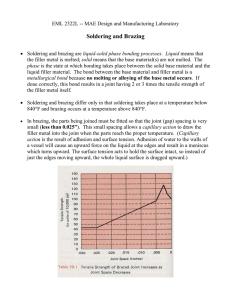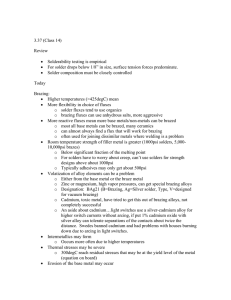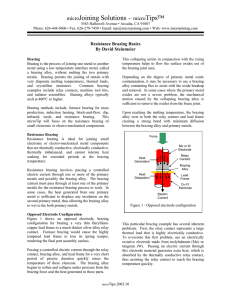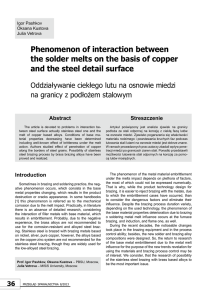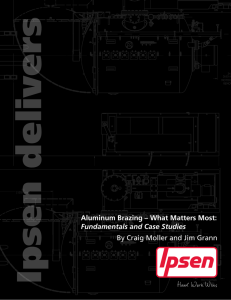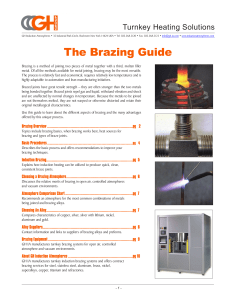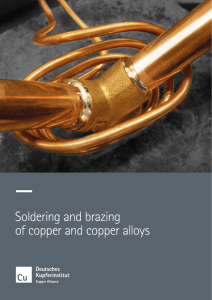What is soldering / brazing
advertisement
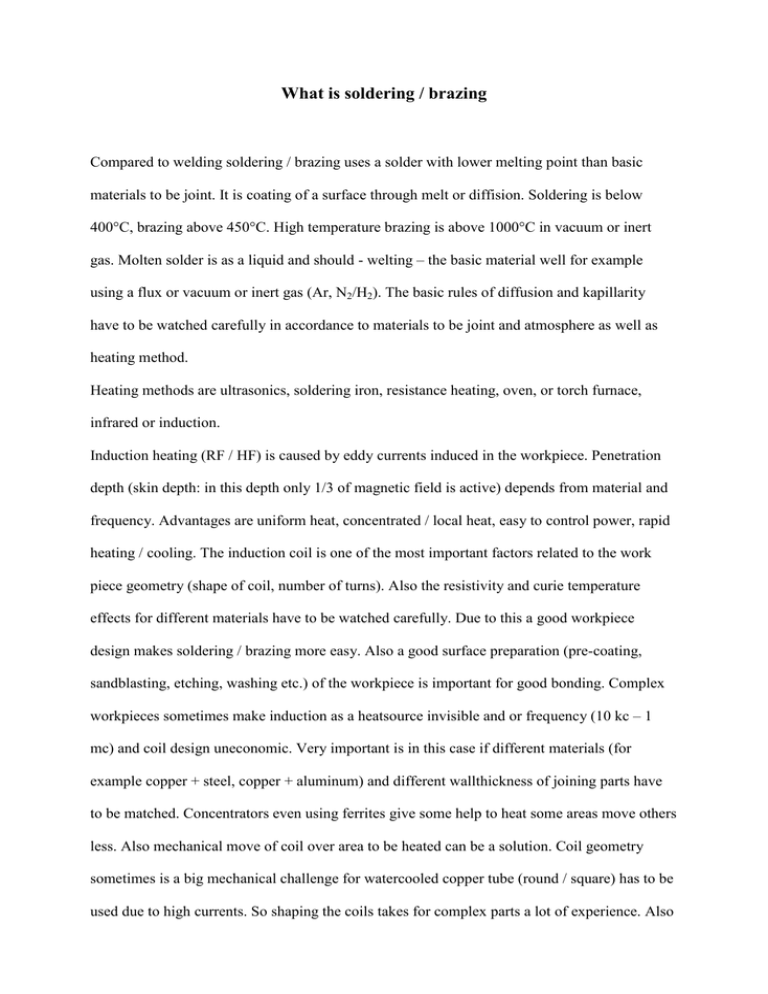
What is soldering / brazing Compared to welding soldering / brazing uses a solder with lower melting point than basic materials to be joint. It is coating of a surface through melt or diffision. Soldering is below 400°C, brazing above 450°C. High temperature brazing is above 1000°C in vacuum or inert gas. Molten solder is as a liquid and should - welting – the basic material well for example using a flux or vacuum or inert gas (Ar, N2/H2). The basic rules of diffusion and kapillarity have to be watched carefully in accordance to materials to be joint and atmosphere as well as heating method. Heating methods are ultrasonics, soldering iron, resistance heating, oven, or torch furnace, infrared or induction. Induction heating (RF / HF) is caused by eddy currents induced in the workpiece. Penetration depth (skin depth: in this depth only 1/3 of magnetic field is active) depends from material and frequency. Advantages are uniform heat, concentrated / local heat, easy to control power, rapid heating / cooling. The induction coil is one of the most important factors related to the work piece geometry (shape of coil, number of turns). Also the resistivity and curie temperature effects for different materials have to be watched carefully. Due to this a good workpiece design makes soldering / brazing more easy. Also a good surface preparation (pre-coating, sandblasting, etching, washing etc.) of the workpiece is important for good bonding. Complex workpieces sometimes make induction as a heatsource invisible and or frequency (10 kc – 1 mc) and coil design uneconomic. Very important is in this case if different materials (for example copper + steel, copper + aluminum) and different wallthickness of joining parts have to be matched. Concentrators even using ferrites give some help to heat some areas move others less. Also mechanical move of coil over area to be heated can be a solution. Coil geometry sometimes is a big mechanical challenge for watercooled copper tube (round / square) has to be used due to high currents. So shaping the coils takes for complex parts a lot of experience. Also the safety to prevent arcing to workpiece must be watched carefully (typical 3 – 10 mm distance). In most applications preformed solid solder (wire, foil) or solder paste with flux are put to the joining area before heating is switched on (arcing, danger to health). Soldering / brazing temperatures are very important especially for complex parts or if liquids of solder is close to melting / softening point of basic material. Also some fluxes don’t like overheating. So an optical pyrometer for RF / HF power control is sometimes helpful for faster process adaption and reproducibility do help to minimize cost of brazing / soldering and loss of material. Using optical pyrometer the emission factor has to be watched carefully. For mass production also the energy required is an important factor. Especially if higher frequencies and higher power with expensive generators / inverters have to be used. The power to be in the workpiece is P= v = Material volume c T v c = specific. Heat of material ___________ T = joining temperature = density of material t = heating time to brazing t temperature The real generator / inverter power due to losses of coil coupling and matching transformer is approx. 80 % to 30 % higher. Matching transformers are needed for many reasons some of these are: 1.) Easy matching of different coils 2.) Lower coil voltage 3.) Flexibility for automation / Robot use 4.) Economic production of multicomponent assemblies Typical problems with induction brazing are: 1.) Wrong inductor design 2.) Gap to big (wetting / contact angle) 3.) Workepiece not clean 4.) Bad material combination 5.) Wrong flux or gas 6.) To high brazing temperature (different crossection of materials)


